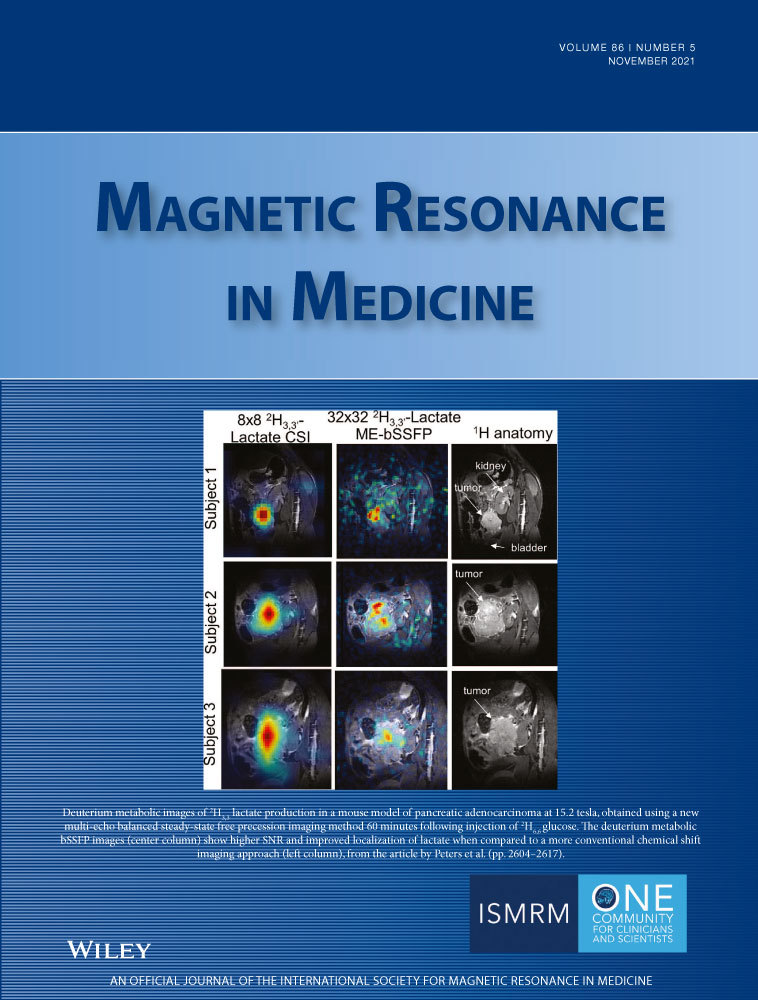DiSpect: Displacement spectrum imaging of flow and tissue perfusion using spin-labeling and stimulated echoes
Funding information
National Institutes of Health (R01EB009690, U01EB025162, R01EB026136, and R01HL13696)
Abstract
Purpose
We propose a new method, displacement spectrum (DiSpect) imaging, for probing in vivo complex tissue dynamics such as motion, flow, diffusion, and perfusion. Based on stimulated echoes and image phase, our flexible approach enables observations of the spin dynamics over short (milliseconds) to long (seconds) evolution times.
Methods
The DiSpect method is a Fourier-encoded variant of displacement encoding with stimulated echoes, which encodes bulk displacement of spins that occurs between tagging and imaging in the image phase. However, this method fails to capture partial volume effects as well as blood flow. The DiSpect variant mitigates this by performing multiple scans with increasing displacement-encoding steps. Fourier analysis can then resolve the multidimensional spectrum of displacements that spins exhibit over the mixing time. In addition, repeated imaging following tagging can capture dynamic displacement spectra with increasing mixing times.
Results
We demonstrate properties of DiSpect MRI using flow phantom experiments as well as in vivo brain scans. Specifically, the ability of DiSpect to perform retrospective vessel-selective perfusion imaging at multiple mixing times is highlighted.
Conclusion
The DiSpect variant is a new tool in the arsenal of MRI techniques for probing complex tissue dynamics. The flexibility and the rich information it provides open the possibility of alternative ways to quantitatively measure numerous complex spin dynamics, such as flow and perfusion within a single exam.
Open Research
DATA AVAILABILITY STATEMENT
In the spirit of reproducible research, we provide a link (https://github.com/mikgroup/DiSpectMRI) to the code and data necessary to reproduce most of the results in this manuscript.




